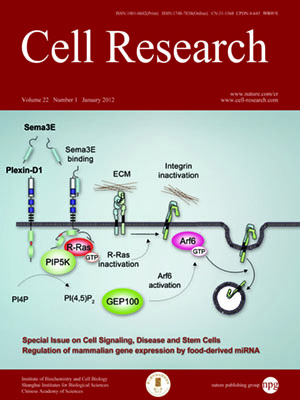
Volume 22, No 1, Jan 2012
ISSN: 1001-0602
EISSN: 1748-7838 2018
impact factor 17.848*
(Clarivate Analytics, 2019)
Volume 22 Issue 1, January 2012: 78-89
REVIEWS
APP physiological and pathophysiological functions: insights from animal models
Qinxi Guo 1,2, Zilai Wang 1 , Hongmei Li 1 , Mary Wiese 1,3 and Hui Zheng 1,2,3
1Huffington Center on Aging, Baylor College of Medicine, One Baylor Plaza, BCM:MS230, Houston, TX 77030, USA
2Program in Translational Biology and Molecular Medicine, Houston, TX 77030, USA
3Department of Molecular and Human Genetics, Baylor College of Medicine, Houston, TX 77030, USA
Correspondence: Hui Zheng(huiz@bcm.edu)
The amyloid precursor protein (APP) has been under intensive study in recent years, mainly due to its critical role in the pathogenesis of Alzheimer's disease (AD). β-Amyloid (Aβ) peptides generated from APP proteolytic cleavage can aggregate, leading to plaque formation in human AD brains. Point mutations of APP affecting Aβ; production are found to be causal for hereditary early onset familial AD. It is very likely that elucidating the physiological properties of APP will greatly facilitate the understanding of its role in AD pathogenesis. A number of APP loss- and gain-of-function models have been established in model organisms including Caenorhabditis elegans, Drosophila, zebrafish and mouse. These in vivo models provide us valuable insights into APP physiological functions. In addition, several knock-in mouse models expressing mutant APP at a physiological level are available to allow us to study AD pathogenesis without APP overexpression. This article will review the current physiological and pathophysiological animal models of APP.
10.1038/cr.2011.116; published online 19 July 2011
FULL TEXT | PDF
Browse 2245


